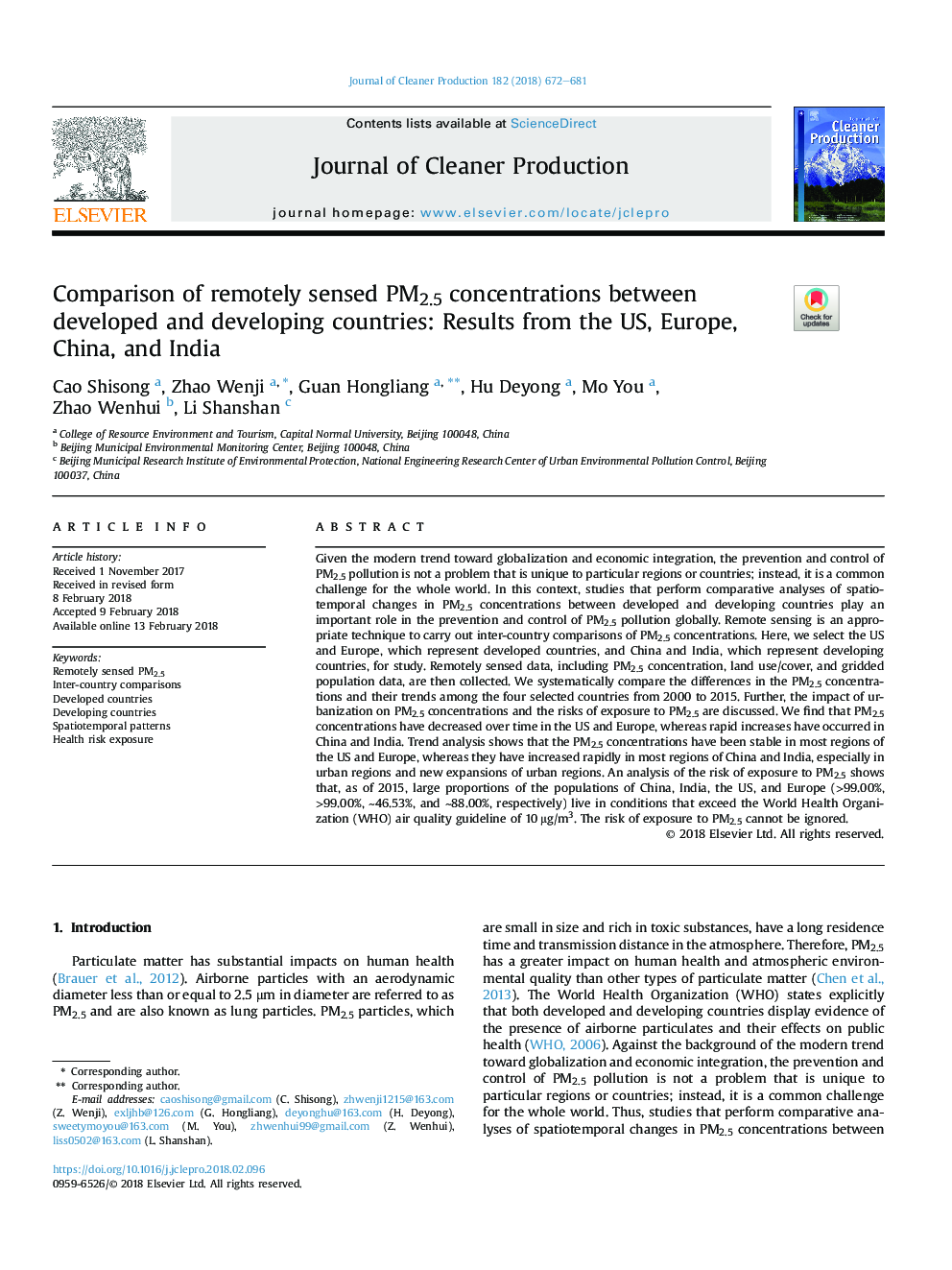| کد مقاله | کد نشریه | سال انتشار | مقاله انگلیسی | نسخه تمام متن |
|---|---|---|---|---|
| 8097409 | 1522071 | 2018 | 10 صفحه PDF | دانلود رایگان |
عنوان انگلیسی مقاله ISI
Comparison of remotely sensed PM2.5 concentrations between developed and developing countries: Results from the US, Europe, China, and India
دانلود مقاله + سفارش ترجمه
دانلود مقاله ISI انگلیسی
رایگان برای ایرانیان
کلمات کلیدی
موضوعات مرتبط
مهندسی و علوم پایه
مهندسی انرژی
انرژی های تجدید پذیر، توسعه پایدار و محیط زیست
پیش نمایش صفحه اول مقاله

چکیده انگلیسی
Given the modern trend toward globalization and economic integration, the prevention and control of PM2.5 pollution is not a problem that is unique to particular regions or countries; instead, it is a common challenge for the whole world. In this context, studies that perform comparative analyses of spatiotemporal changes in PM2.5 concentrations between developed and developing countries play an important role in the prevention and control of PM2.5 pollution globally. Remote sensing is an appropriate technique to carry out inter-country comparisons of PM2.5 concentrations. Here, we select the US and Europe, which represent developed countries, and China and India, which represent developing countries, for study. Remotely sensed data, including PM2.5 concentration, land use/cover, and gridded population data, are then collected. We systematically compare the differences in the PM2.5 concentrations and their trends among the four selected countries from 2000 to 2015. Further, the impact of urbanization on PM2.5 concentrations and the risks of exposure to PM2.5 are discussed. We find that PM2.5 concentrations have decreased over time in the US and Europe, whereas rapid increases have occurred in China and India. Trend analysis shows that the PM2.5 concentrations have been stable in most regions of the US and Europe, whereas they have increased rapidly in most regions of China and India, especially in urban regions and new expansions of urban regions. An analysis of the risk of exposure to PM2.5 shows that, as of 2015, large proportions of the populations of China, India, the US, and Europe (>99.00%, >99.00%, â¼46.53%, and â¼88.00%, respectively) live in conditions that exceed the World Health Organization (WHO) air quality guideline of 10â¯Î¼g/m3. The risk of exposure to PM2.5 cannot be ignored.
ناشر
Database: Elsevier - ScienceDirect (ساینس دایرکت)
Journal: Journal of Cleaner Production - Volume 182, 1 May 2018, Pages 672-681
Journal: Journal of Cleaner Production - Volume 182, 1 May 2018, Pages 672-681
نویسندگان
Cao Shisong, Zhao Wenji, Guan Hongliang, Hu Deyong, Mo You, Zhao Wenhui, Li Shanshan,